By Kevin Stocklin
April 19, 2023
Updated: April 28, 2023
News Analysis
While the Biden administration cannot force you to buy an electric car, it can, by capping tailpipe emissions and other coercive measures, compel producers to severely curtail the manufacturing of internal combustion engine (ICE) cars and drive up the cost of gasoline-powered cars. This will likely result in a fundamental restructuring of America’s automotive industry, which accounts for about 3 percent of U.S. GDP and employs more than 1.7 million Americans.
The Biden administration’s auto industrial policy features a combination of ever-tightening emissions regulations, subsidies to electric vehicle (EV) auto manufacturers, and government payments to EV consumers. The Infrastructure Law, passed in 2021, featured $25 billion for things like charging stations, EV production, and mining. The 2022 Inflation Reduction Act doled out billions more in subsidies, and several European countries and U.S. states have banned or plan to ban the sale of new ICE vehicles over the next several years.

President Joe Biden speaks at the 2022 North American International Auto Show in Detroit, Mich., on Sept. 14, 2022. (MANDEL NGAN/AFP via Getty Images)
The most recent effort is new Environmental Protection Agency (EPA) regulations that will set significantly higher CO2 emissions standards for passenger vehicles, heavy trucks, and buses. This follows President Joe Biden’s directive that half of all new passenger vehicles and trucks should be zero-emission vehicles (ZEVs) by 2030.
These regulations, Biden claims, will cut 10 billion tons of CO2 emissions by 2055. And according to the EPA, EVs aren’t just good for the planet but they also are good for your wallet. Buying an EV will save the average American an estimated $12,000 over the life of the vehicle, the agency claims. The EPA states that the benefits of its new emissions standards will exceed costs by at least $1 trillion.
However, some analysts say these numbers don’t add up. They predict that Biden’s EV industrial policy will fail about as badly, and prove about as costly, as most other government schemes to direct and micromanage private-sector industries.
There are many reasons to question whether an automotive industrial policy favoring EVs makes sense. But here are four claims in particular that analysts challenge.
Claim 1: Electric Vehicles Are Good for the Environment
The push for EVs, Biden claims, is necessary to cut global greenhouse gas (GHG) emissions. But the EPA regulations focus solely on vehicle tailpipe emissions, where EVs have a clear advantage. When the manufacturing and charging of EVs is taken into account, EVs become dramatically less “green,” and can actually increase CO2 emissions.
Electric vehicles are portrayed as a transition from dirty, gasoline-fueled vehicles to non-polluting, electric vehicles. Looking at the whole picture, it is more accurate to say that EVs exchange high-density liquid fuel for low-density mineral-based energy in the form of batteries, which are extracted and mined using fossil fuels, then charged with electricity generated at least in part by fossil fuels.
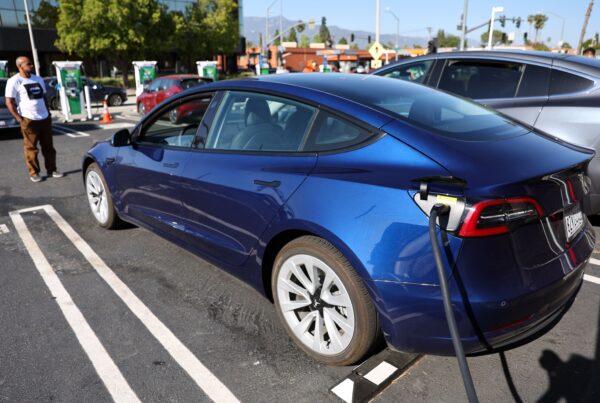
Tesla car recharges at a Tesla Supercharger station in Pasadena, Calif., on April 14, 2022 (Mario Tama/Getty Images)
Whether an EV emits less CO2 than and internal combustion engine over its lifetime depends greatly on how its component minerals are produced, and how, where, and when the EV is driven and charged. Predictions that EVs will be cleaner than ICE vehicles appear to be based on best-case scenarios across the board.
One basic issue with EVs is that batteries are significantly less dense energy sources than liquid fossil fuels. In order to get the same driving range as 60 pounds of gasoline, an EV battery would have to weigh about 1,000 pounds, according to a report by energy economist Mike Mills. In order to mine enough materials for one average EV battery, 250 tons of rock and earth must be moved, and 50 tons of extracted minerals must then be transported, in most cases to China, to be refined using what is typically a coal-powered process.
A report by the International Energy Agency (IEA), an energy analytics group, “The shift to a clean energy system is set to drive a huge increase in the requirements for these minerals.”
According to the IEA, “a typical electric car requires six times the mineral inputs of a conventional car.” To meet the expected production of EVs, wind turbines, and solar panels, the IEA project that the demand for lithium will grow by 40 times by 2040; the demand for graphite, cobalt, and nickel will grow by 20–25 times; the demand for rare-earth elements will grow 3–7 times; and the demand for copper will double.
CO2 emissions from all this new mining will certainly increase, but by how much is uncertain. To highlight the uncertainty of emissions estimates from this process, Mills cites a compilation of 50 academic studies that found that emissions from a single EV battery ranged from eight to 20 tons of CO2, depending on where and how raw materials are sourced and processed.
“The high end of those ranges is nearly as much CO2 as is produced by the lifetime of fuel burned by an efficient conventional car,” Mills writes. “Again, that’s before the EV is delivered to a customer and driven its first mile.”
Electric vehicles thus enter the world with what is called a “carbon debt,” and some believe that carbon debt will be on the high end of estimates. As EVs become more ubiquitous, the number of driven miles where EVs repay their carbon debt will likely get pushed farther and farther away and the cost of manufacturing them will likely rise.
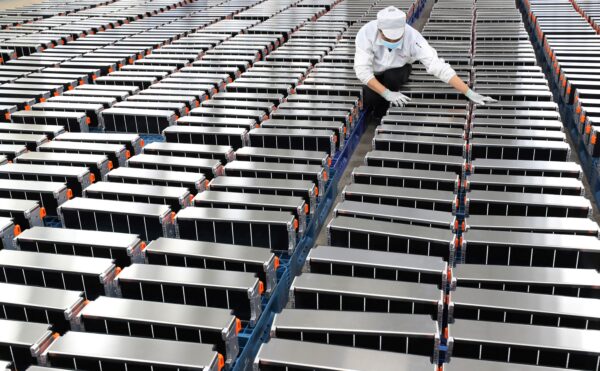
Worker with car batteries in Nanjing, China, on March 12, 2021. (STR/AFP via Getty Images)
“Trends show that energy-use-per pound mined has been rising because of long-standing declines in ore grades,” Mills states. “If mineral demands accelerate, miners will necessarily chase ever lower-grade ores and increasingly in remote locations. The IEA sees, for example, a 300 percent to 600 percent increase in emissions to produce each pound of lithium and nickel respectively.”
In addition to manufacturing, there is the question of how EVs are charged. In a country like the United States, where 60 percent of electricity is generated by fossil fuels, the emissions savings are reduced further, in some parts of the country to zero. Proponents argue that America’s grid will be increasingly powered by wind and solar, but installing that new capacity comes with its own carbon debt from mineral mining, and solar power will likely not be useful when people charge their cars overnight.
Claim 2: America’s Electric Grid Can Power EVs
John Moura, director of reliability assessment at the North American Electricity Reliability Corp. (NERC), told The Epoch Times that the U.S. electricity grid is designed to handle peak demand in summer when Americans runs air-conditioning units, but that “one electric vehicle charger is equivalent to about two-and-a-half normal-sized air conditioners.”
The NERC produces an annual long-term reliability assessment (LTRA). According to the 2022 LTRA, while many areas of America’s grid are expected to meet demand, several areas are at “high risk” of falling short. This condition is only exacerbated by government and private initiatives to replace reliable fossil fuel power production with weather-dependent wind and solar plants.
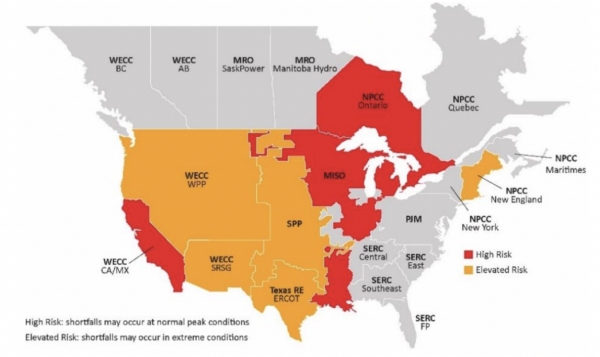
(Source NERC. Areas of concern for electric grid failure are shown in orange and red.)
“Today, we don’t have the generating capacity that would be needed to serve any percentage of the total EV cars in a given area,” Moura said. “No area has the capacity to handle it today. We have a lot of things that are electrifying as well—manufacturing processes, crypto mining, population growth.” Lawmakers in places like Massachusetts and California are working to push home and office heating onto the electric grid, as well.
“You need quite a tremendous increase in electricity transmission capacity,” Peter Hartley, an energy economist at Rice University, told The Epoch Times. In addition, “to put all these charging stations along interstates and so forth is a pretty expensive proposition.”
The cost will largely be paid by taxpayers and electricity consumers, creating another subsidy for EV owners.
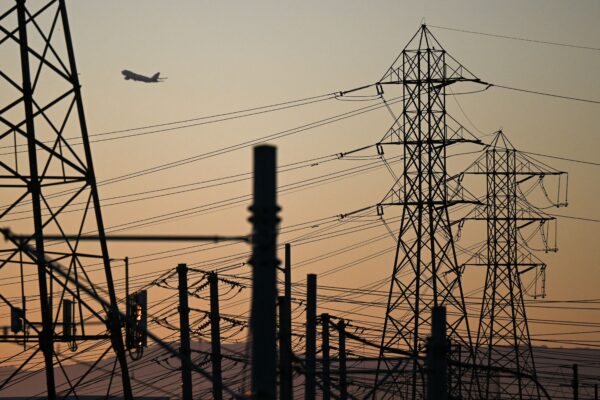
Electric power lines at sunset in El Segundo, Calif., on Aug. 31, 2022. (Patrick T. Fallon/AFP via Getty Images)
In addition to building the charging stations and new generating capacity, there are the electric wires to connect each station into the grid. This entails more mining for copper and other minerals, more construction, and the CO2 emissions that go with it.
Claim 3: Electric Vehicles Are Affordable, Superior Products
According to the EPA, despite all the necessary incentives to compel people to buy EVs, there are many benefits to owning them, if consumers only knew.
“Battery electric vehicles offer consumers significant pocketbook savings compared to gasoline and diesel vehicles, from reduced fuel costs as well as reduced costs for maintenance and repair,” an EPA representative told The Epoch Times.
“A battery electric vehicle owner of a model year 2032 sedan, wagon, crossover utility vehicle, or SUV would save about $9,000 on average on fuel, maintenance, and repair costs over an eight-year period (the average period of first ownership) compared to a gasoline vehicle. A battery electric vehicle pickup truck owner would save even more—about $13,000,” according to the EPA.
These estimates do not include the additional cost of buying an EV, but the Inflation Reduction Act includes subsidies of $7,500 for eligible new EVs and $4,000 for used ones.
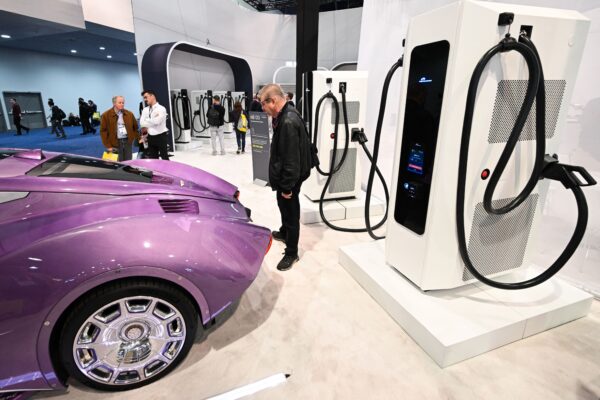
A Hispano Suiza Carmen Boulogne electric super car is displayed in front of a NB 480 electric vehicle power-charging station at the Power Electronics booth during the Consumer Electronics Show (CES) in Las Vegas, Nev., on Jan. 6, 2023. (Patrick T. Fallon/AFP via Getty Images)
To date, EVs have been a niche product, and although sales have increased dramatically in recent years, they still make up only about 6 percent of all cars sold in America today.
According to Hartley, EVs have been popular, often as a second vehicle, for people living near cities, who drive short distances, and can charge them at home or at work and don’t have to rely on public charging stations.
“To use them to transport over long distances doesn’t make a whole lot of sense,” he said.
They have generally been cars for the urban affluent, as their price tag is above what many Americans can afford. The average cost of a new EV in 2023 was above $60,000, which is more than 30 percent above the average cost of an ICE vehicle, though that gap has recently narrowed.
Cheaper models, like the Nissan Leaf or the Chevrolet Bolt, start between $26,500 and $28,000, but smaller batteries in these cars mean their range before recharging is more limited, and manufacturers’ profit margins are much lower on these models. The Bolt’s range is 250 miles on a full charge.
EV owners currently avoid gas taxes, which fund road construction and maintenance. But EV owners will at some point have to also begin paying for their usage of roads. And electricity prices will likely go up to pay for additions to the grid, further increasing the cost of ownership.
But where EVs fall short is the most basic reason why people buy cars: they provide freedom to go where you want, whenever you want. They can be refueled in minutes at ubiquitous filling stations, and oil is a commodity that the United States has in abundance. Electric vehicles, by contrast, are tied to the electric grid, which increasingly is struggling to meet demand even at current levels.
In summer 2022, California asked EV owners not to charge their cars because the electric grid was struggling to meet demand. In January, following rolling blackouts during Christmas, Tennessee electricity administrator Chris Templeton was asked what would happen if half of Tennesseans owned EVs during such an event. He responded that they would be asked not to charge them.
Claim 4: Electric Vehicles Are a Good Bet for America’s Automakers
The market share for EVs has been increasing rapidly, and the U.S. Energy Information Association (EIA) foresees a bright future for EV manufacturers. It predicts in its 2023 Annual Energy Outlook that zero-emission vehicles (ZEVs) could achieve a market share of 14–24 percent by 2050, depending on how high the price of gasoline goes, from the current 6.4 percent. The EPA is more optimistic, stating that its new regulations combined with federal subsidies will boost the market share of ZEVs to 67 percent.
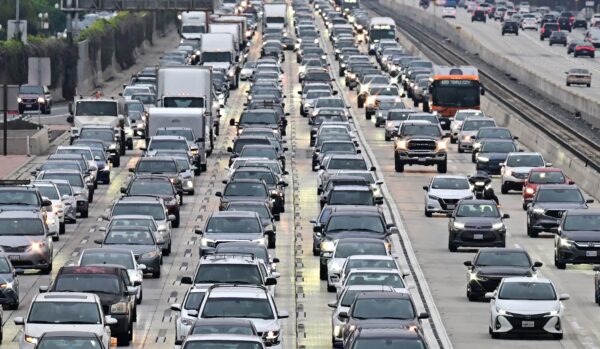
Vehicles head east on a freeway during the evening rush-hour commute in Los Angeles, Calif., on April 12, 2023. (Frederic J. Brown/AFP via Getty Images)
Automakers have responded, spending tens of billions on new EV assembly plants. In 2021, they announced $36 billion in new spending on EV manufacturing; in the first half of 2022 alone, they announced an additional $24 billion. This compares to approximately $5 billion in non-EV investments over that 18-month period.
A Wall Street Journal report noted the proliferation of new EV manufacturers, including those that went public in recent years: Rivian, Nikola, Canoo, Lordstown, Fisker, Workhorse Group, Mullen Automotive, and Lucid. They then were quickly valued at billions of dollars.
“Most had never sold a single car at their public debut,” the report stated. “Fueled by cheap credit and political subsidies, their stocks surged, only to crash.”
“Projected declines in EV vehicle component costs, along with federal and state policies that provide incentives for EV purchases or require minimum sales, drive EV sales growth in our model projection,” the EIA states. The bet is that the cost of making EVs will come down and that, of course, most consumers will want them.
But increasing demand for component materials to manufacture EVs indicates that costs will likely go up rather than down, leaving carmakers the choice of raising EV prices or, for those who are still making ICE vehicles, subsidizing EV losses by raising prices on on gas cars.
“The inherent costs of electric vehicles are tied to the mineral inputs that are needed to make the vehicles,” Mills said. “They’re inherently heavier than conventional vehicles, and they inherently require a radical increase in the consumption of basic metals, not just unusual metals, not just lithium or cobalt, but common metals like copper and aluminum.
“The consumption per vehicle is roughly 200–300 percent more than for conventional vehicles, so the world is going to have to supply the automakers enough copper and aluminum without raising the cost of the vehicle, and none of the data show that that’s happening,” Mills said. “In effect, the world’s automakers are making this bet, betting the world’s miners will provide them with the materials they need to build vehicles. There’s no evidence that’s happening or that it’s going to happen, and by evidence I mean actual spending and investments in sufficient mining capacity.”
Experts within the mining industry concur with this assessment.
Steve Hanson, CEO of ACME Lithium, for example, told The Epoch Times that, regarding essential minerals for batteries, “every forecast suggests we’re going to be in perpetual deficit.” About 95 percent of all lithium produced today, he said, comes from four countries: Australia, China, Argentina, and Chile.
“It’s all fine to build battery factories, to build the infrastructure, to forecast thousands of vehicles to be on the road, but the supply chain needs to be put in place,” Hanson said. “It is an absolute concern by the auto manufacturers, by technology companies, by all areas of the supply chain, that we will have enough.”
Hanson said he believes there are significant supplies of lithium in the North America, but companies struggle to get the permits from government agencies to mine them. Mining companies have received stiff resistance not only from the EPA but also from local environmental groups.
In canceling the Pebble Bay copper mining project in May 2022, the EPA stated: “Two decades of scientific study show us that mining the Pebble Deposit would cause permanent damage to an ecosystem that supports a renewable economic powerhouse and has sustained fishing cultures since time immemorial.”
One country that currently has first claim on EV raw materials is China. Having worked out mining contracts with countries like the Democratic Republic of Congo, where 70 percent of cobalt is sourced, China now has a controlling market share in the refining of essential EV minerals. According to the IEA, “China’s share of refining is around 35 percent for nickel, 50–70 percent for lithium and cobalt, and nearly 90 percent for rare-earth elements.”
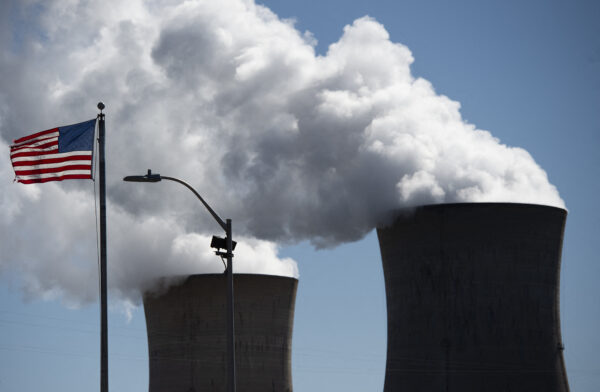
Steam rises out of the nuclear plant on Three Mile Island, with the operational plant run by Exelon Generation, in Middletown, Pa., on March 26, 2019. (Andrew Caballero-Reynolds/AFP via Getty Images)
Given China’s control over raw materials, Western automakers are becoming little more than assembly plants for imported materials, the supply of which they cannot control. Chinese automakers are already dominating global EV market. By contrast to the approximately 800,000 EVs sold in the United States in 2022, China’s EV manufacturing capacity is 5.7 million vehicles.
Chinese automakers are not only better able to source material inputs but they also are lower-cost producers, producing EVs on average €10,000 cheaper than European competitors. China currently produces more than half of the world’s EV batteries.
This leads some analysts to question if Western car manufacturers are surrendering the engineering and manufacturing expertise, as well as brand recognition they have built up over decades with ICE vehicles, to jump into a technology that some say is essentially “batteries and computers with wheels,” and where Western companies have little competitive advantage.
Central Planning’s Troubled History
Some carmakers are stepping out of line to criticize the EV movement. In January 2022, Carlos Tavares, the CEO of Stellantis—a merger of Fiat, Chrysler, and Peugot, to form the world’s fifth-largest carmaker—said EVs were “a technology chosen by politicians” and “imposed” on the auto sector.
The pitfalls of industrial policy and central planning are that state plans are based on political calculations, they are expensive and wasteful, they tend to cronyism enriching insiders, they inevitably choose outdated or inferior technologies, and they are slow to change course when plans fail or to keep up with new innovations.
“Any environmental economist will tell you that trying to solve environmental problems with central-planning solutions invariably gives you much less environmental bang for your buck, or much, much higher costs for the given amount of environmental good that you do,” Hartley said.
Georgia, for example, has spent $1.5 billion in taxpayers’ money since 2021 in tax breaks and grants to attract a new plant by EV maker Rivian, which aspired to dominate the electric truck market. The effort was plagued by delays and missed sales targets, with Rivian today facing losses and concerns that it could go under.
According to a study by George Mason University professors titled, “The Economics of a Targeted Economic Development Subsidy,” subsidizing industry in this way usually proves harmful, for five reasons: subsidized companies are less efficient; companies become reliant on state favors; non-subsidized companies are harmed; communities are harmed because subsidized companies are more prone to failure; and taxpayers inevitably end up paying the cost.
“Every business has a hard time resisting massive government policies and funding,” Mills said. “[Auto manufacturers] have to hope the government will keep subsidizing to convince consumers to behave, or they have to hope that governments will require consumers to buy products.”
Indeed, when conservative states attempted to thwart the EPA’s new emissions rules last year, automakers came out in support of the EPA.
“I had a former colleague who said that there’s always a problem when you sleep with elephants, and that is, you might get squashed,” Hartley said. “Getting in bed with governments is like sleeping with elephants, and the problem with this [EV transition] is that it’s all driven by government policy more than consumer demand.”
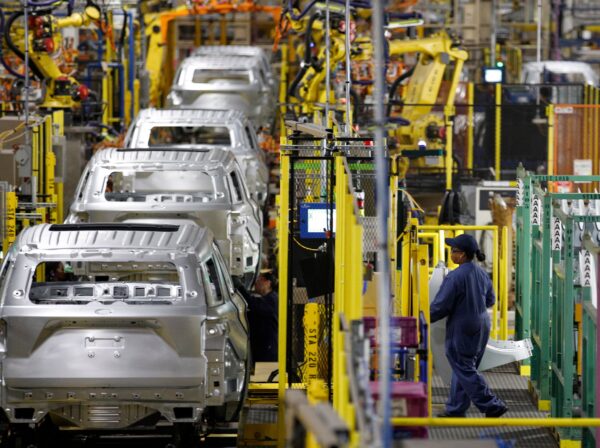
Workers assemble cars at the newly renovated Ford’s Assembly Plant in Chicago, Ill., on June 24, 2019. (Jim Young/AFP via Getty Images)
The risks to U.S. carmakers are that consumer demand for EVs isn’t there, or that they can’t source critical materials at an economic price, or that the electric grid can’t power EVs at scale, or that they lose their competitive advantage to low-cost manufacturers in countries like China.
Please continue reading at the following weblink:
https://www.theepochtimes.com/analysis-what-youre-not-being-told-ab...
Biden’s Green Energy Boondoggle Keeps Getting Bigger
https://www.dailywire.com/news/bidens-green-energy-boondoggle-keeps...
Bud Light Sales Fall 26% as Transgender Backlash Worsens: Report
May 1, 2023
The Dylan Mulvaney controversy continues to hurt Bud Light.
Beer Business Daily reported Sunday that Bud LIght’s off-premise sales volume—the amount of beer sold outside of restaurants and bars—was down 26.1% from a year earlier in the week ended April 22, based on scan data. Volumes were down 21.1% in the prior week, while so far this year, Bud Light volumes are down 8%.
The figures include sales at grocery stores, convenience stores, and liquor stores.
“The shocking deterioration of Bud Light Blue’s market share continued apace through the third week of April — and actually somehow worsened. We’ve never seen such a dramatic shift in national share in such a short period of time,” Beer Business Daily wrote on its website.
Full article at the following weblink:
https://www.barrons.com/articles/bud-light-sales-dylan-mulvaney-tra...
Kash Patel: Intel Community Has Been Behind Countless Efforts To Thwart Trump.
https://rumble.com/v2lgvta-kash-patel-intel-community-has-been-behi...
Views: 115
Comment
-
Comment by Thinklike A. Mountain on May 2, 2023 at 2:20pm
-
I don't know who blew up the THREE World Trade Center stel skyscrapers. But I do know that our government and mainstream media lied to us about the cause of the Building 7 collapse. You know, the skyscraper collapse you never really heard about.
Tucker: ‘No One Cares If You’re A Flat-Earther — But If You Question Building 7 You’ll Lose Your Job’
https://www.infowars.com/posts/tucker-no-one-cares-if-youre-a-flat-...Tucker Carlson Learned About Building 7 at Infowars
https://www.infowars.com/posts/tucker-carlson-learned-about-buildin...What really happened to WTC Building 7 (what the government and mainstream media desperately don't want you to know
https://www.youtube.com/watch?v=IYUYya6bPGw&t=15s
University of Alaska engineering department 4 year study on WTC Building 7: Controlled Demolition
A Structural Reevaluation of the Collapse of World Trade Center 7
-
Comment by Willem Post on May 1, 2023 at 7:00am
-
This is a great article in Epoch Times, a weekly news paper to which I subscribe already for 5 years
I highly recommend reading this article and subscribing to the Epoch Times.
The newspaper is zillions times better than the NYT, WSJ, etc.
© 2025 Created by Webmaster.
Powered by
![]()
You need to be a member of Citizens' Task Force on Wind Power - Maine to add comments!
Join Citizens' Task Force on Wind Power - Maine